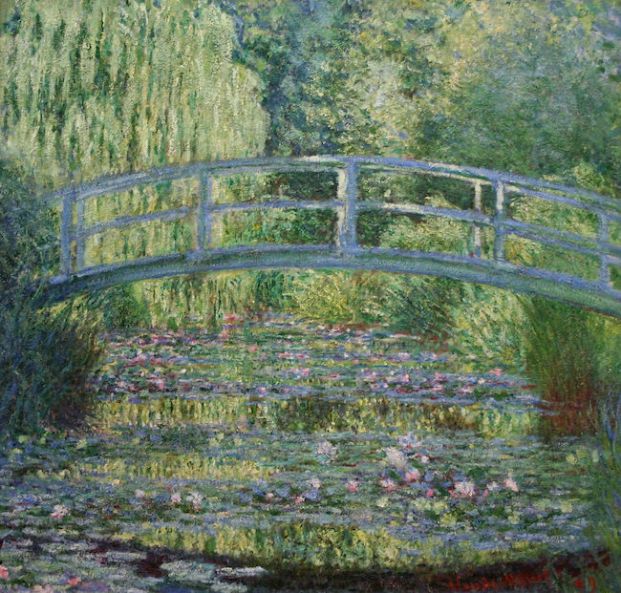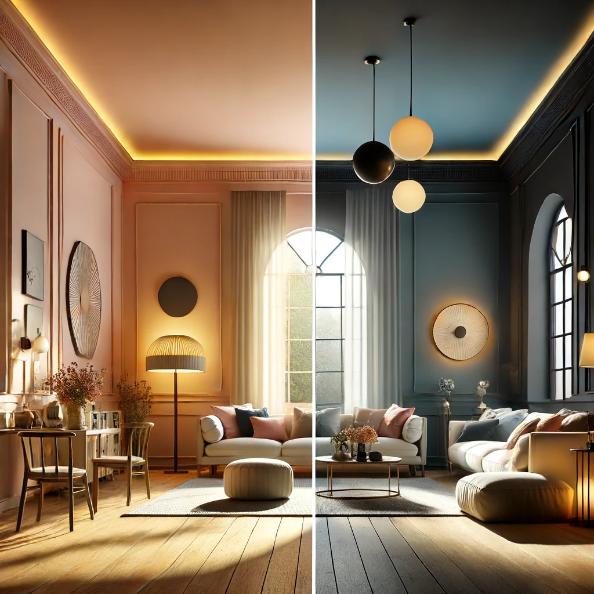In color theoryColor Theory is a comprehensive framework used to understand and analyze the use and interaction of colors in visual compositions. It serves as a critical guide for artists, designers, and marketers, helping them create harmonious and effective designs. This concept encompasses various principles and elements that dictate how colors are combined, perceived, and utilized. Primary Colors: • The three foundational More, value refers to the lightness or darkness of a color. This concept is crucial for artists and designers because it helps create depth, contrast, and visual interest in their work. Value is one of the three properties of color, alongside hueIn color theory, hue is one of the main properties of a color, defining its dominant wavelength. This characteristic determines whether we perceive a color as red, orange, yellow, green, blue, or violet. Understanding hue is essential for artists, designers, and anyone working with color. Defining Hue • Definition: Hue is the degree to which a color can be described More and saturation.
Defining Value
Value indicates how light or dark a color appears. It ranges from black to white, with various shadesIn color theory, a shade is a darker version of a color, created by adding black to the original hue. This concept is essential for artists and designers, as it allows for a range of deeper, more intense tones that can add depth and drama to a composition. Defining Shade A shade results from mixing a pure hue with black. More of gray in between. Adjusting the value of a color can significantly impact the mood and readability of a composition.
- High Value: Colors that are closer to white.
- Low Value: Colors that are closer to black.
- Mid Value: Colors that are in between high and low values, often considered neutral grays.
Importance of Value in Color TheoryColor Theory is a comprehensive framework used to understand and analyze the use and interaction of colors in visual compositions. It serves as a critical guide for artists, designers, and marketers, helping them create harmonious and effective designs. This concept encompasses various principles and elements that dictate how colors are combined, perceived, and utilized. Primary Colors: • The three foundational More
Value plays a fundamental role in color theoryColor Theory is a comprehensive framework used to understand and analyze the use and interaction of colors in visual compositions. It serves as a critical guide for artists, designers, and marketers, helping them create harmonious and effective designs. This concept encompasses various principles and elements that dictate how colors are combined, perceived, and utilized. Primary Colors: • The three foundational More and is essential for creating a balanced and harmonious composition.
- Contrast: High contrast between values can draw attention and highlight important elements.
- Depth and Dimension: Variations in value help create a sense of depth and three-dimensionality in artwork.
- Mood and Atmosphere: Different values can evoke various emotional responses and set the overall tone of a piece.
Value in Digital and Print Media
Value is crucial in both digital and print media, affecting how images and designs are perceived.
- Digital Design: In digital design, value is adjusted using software tools that modify the brightness and contrast of colors. Designers often use grayscale to focus on value without the distraction of color.
- Print Media: In print, value is controlled by the amount of inkInk, a liquid or paste used for writing, drawing, and printing, has played a crucial role in communication and artistic expression throughout history. Made from various pigments and dyes, ink allows for the transfer of text and images onto surfaces such as paper, fabric, and other materials. Types of Ink There are several types of ink, each serving different purposes More applied to the paper. Halftone techniques can create varying values by adjusting the density of dots.
Psychological and Cultural Significance of Value
Values can carry specific psychological and cultural meanings.
- Psychological Impact: Light values are generally perceived as airy, open, and calming. Dark values can convey heaviness, seriousness, and mystery.
- Cultural Associations: Different cultures may have unique associations with light and dark values. In Western cultures, light values are often associated with purity and innocence, while dark values can be linked to formality and sophistication.
Creating Value in Art
Artists manipulate value to achieve various effects in their work.
- Shading and Highlighting: Adding shadesIn color theory, a shade is a darker version of a color, created by adding black to the original hue. This concept is essential for artists and designers, as it allows for a range of deeper, more intense tones that can add depth and drama to a composition. Defining Shade A shade results from mixing a pure hue with black. More (darker values) and highlights (lighter values) helps create a sense of light and shadow, enhancing realismRealism is an art movement that emerged in the mid-19th century, emphasizing the depiction of subjects as they appear in everyday life. It rejects the idealized forms and dramatic expressions of Romanticism, focusing instead on accuracy, truthfulness, and the mundane aspects of the human experience. Realism strives to capture the world in a straightforward and unembellished manner. Gustave Courbet, The More.
- Grayscale Studies: Artists often create grayscale studies to focus solely on value, helping them understand how light and dark values interact.
- Value Scales: These scales range from black to white, providing a reference for artists to ensure a full range of values in their compositions.
Historical Use of Value
Throughout art history, value has been used to achieve specific effects and convey different moods.
- Renaissance Art: Renaissance artists like Leonardo da Vinci used chiaroscuro, a technique that contrasts light and dark values to create depth and volume.
- ImpressionismImpressionism was an art movement of the 19th century developed in France, based on the practice of painting spontaneously out-doors (“en plein air”) rather than in the studio. Key impressionist subjects were everyday scenes and landscapes, in which the momentary and transient effects of sunlight should be captured. The artists worked directly in front of their subjects, using rapid brushwork More: Impressionist painters such as Claude MonetFrench painter Claude Monet (1840 – 1926) was a key figure of the impressionist movement which started in the second half of the 19th century. During his long career, Monet focused on depicting leisure activities and plein air landscape painting. Born in Paris, his family moved to Le Havre in Normandy when Claude was 5 years old. From early on, More used variations in value to capture the changing effects of light in their scenes.

Challenges with Value
Working with value presents its own set of challenges, particularly in maintaining consistency and achieving the desired effect.
- Value Consistency: Ensuring consistent values across different mediums and lighting conditions can be difficult. Artists and designers often use value charts to maintain consistency.
- Overuse of High Contrast: While high contrast can be effective, overusing it can create a harsh or overwhelming composition. It’s important to balance contrast with softer transitions.
Applications of Value in Design
Value is widely used in various design fields to create specific visual effects and enhance readability.
- Interior Design: Value plays a key role in interior design, affecting the perception of space and atmosphere. Light values can make a room feel larger and more open, while dark values can create a cozy, intimate environment.
- Graphic Design: In graphic design, value helps create visual hierarchy and emphasis. For example, lighter values can be used for background elements to make text and other focal points stand out.

Value vs. HueIn color theory, hue is one of the main properties of a color, defining its dominant wavelength. This characteristic determines whether we perceive a color as red, orange, yellow, green, blue, or violet. Understanding hue is essential for artists, designers, and anyone working with color. Defining Hue • Definition: Hue is the degree to which a color can be described More and Saturation
It’s important to distinguish between value, hueIn color theory, hue is one of the main properties of a color, defining its dominant wavelength. This characteristic determines whether we perceive a color as red, orange, yellow, green, blue, or violet. Understanding hue is essential for artists, designers, and anyone working with color. Defining Hue • Definition: Hue is the degree to which a color can be described More, and saturation. While value refers to the lightness or darkness of a color, hueIn color theory, hue is one of the main properties of a color, defining its dominant wavelength. This characteristic determines whether we perceive a color as red, orange, yellow, green, blue, or violet. Understanding hue is essential for artists, designers, and anyone working with color. Defining Hue • Definition: Hue is the degree to which a color can be described More refers to the color itself, and saturation refers to the intensityIn color theory, intensity, also known as saturation or chroma, refers to the purity and vividness of a color. This property is essential for artists and designers as it helps create dynamic and engaging visuals. Intensity determines how bright or dull a color appears, influencing the overall impact and mood of a composition. Defining Intensity Intensity measures the degree of More or purity of the color.
- Value: Indicates the lightness or darkness of a color.
- HueIn color theory, hue is one of the main properties of a color, defining its dominant wavelength. This characteristic determines whether we perceive a color as red, orange, yellow, green, blue, or violet. Understanding hue is essential for artists, designers, and anyone working with color. Defining Hue • Definition: Hue is the degree to which a color can be described More: Refers to the color (e.g., red, blue, yellow).
- Saturation: Measures the intensityIn color theory, intensity, also known as saturation or chroma, refers to the purity and vividness of a color. This property is essential for artists and designers as it helps create dynamic and engaging visuals. Intensity determines how bright or dull a color appears, influencing the overall impact and mood of a composition. Defining Intensity Intensity measures the degree of More or purity of the color.

Visualizing Value
To fully understand the concept of value, visual aids such as value scales, gradient charts, and real-life examples can be helpful.
- Value Scales: These scales show a range of values from black to white, illustrating how light or dark a color can be.
- Gradient Charts: These charts display a smooth transition between different values, helping artists and designers understand gradual changes in lightness and darkness.
- Real-Life Examples: Photos of objects in various lighting conditions can provide practical insights into how value affects perception.
Understanding value and its applications allows artists and designers to expand their creative possibilities and enhance their work with a broader range of lightness and darkness. This understanding is crucial for creating visually compelling and emotionally resonant compositions.
Read more about color theoryColor Theory is a comprehensive framework used to understand and analyze the use and interaction of colors in visual compositions. It serves as a critical guide for artists, designers, and marketers, helping them create harmonious and effective designs. This concept encompasses various principles and elements that dictate how colors are combined, perceived, and utilized. Primary Colors: • The three foundational More here:
Color Theory Simplified: Make Your Art Stand Out with These Easy Tips
Mastering Color Theory: Watercolor Hacks for Vibrant Palettes
Mastering Art with Color Theory: Kandinsky’s Transformative Vision
